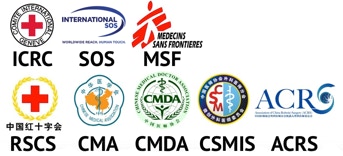

Doctors
Institutions
Conditions
Drugs
Insurances
TCM
Research
About Us
Contact Us
What is vulvitis?
Vulvitis is an inflammation of the vulva. This is the soft folds of skin outside the vagina. It’s a symptom that can result from an array of diseases. This can include infections, injuries, allergies, or irritants. Because it can be challenging to find the exact cause, diagnosing and treating this condition can be difficult.
What causes vulvitis?
Vulvitis may be caused by one or more of the following:
Toilet paper with perfume or dye
Soaps or bubble baths with perfume
Shampoos and hair conditioners
Laundry detergents
Vaginal sprays, deodorants, and powders
Spermicides
Douching
Hot tub and swimming pool water
Underwear made of synthetic material without a cotton crotch
Rubbing against a bike seat
Wearing a wet bathing suit for a long period
Riding a horse
Infections such as pubic lice or mites (scabies)
Who is at risk for vulvitis?
Any woman with certain allergies, sensitivities, infections, or diseases can develop vulvitis. Women may develop it before puberty and after menopause. This may be due to a drop in estrogen.
What are the symptoms of vulvitis?
Each person may experience symptoms differently. Symptoms may include:
Redness and swelling on the labia and other parts of the vulva
Intense itching
Clear, fluid-filled blisters
Sore, scaly, thick, or white patches on the vulva
The symptoms of vulvitis may look like other conditions or medical problems. Always talk with your healthcare provider for a diagnosis.
How is vulvitis diagnosed?
Along with a complete medical history and physical and pelvic exam, other tests may include:
Blood tests
Urine tests
Tests for sexually transmitted diseases (STDs)
Pap test. This test involves microscopic exam of cells collected from the cervix. It’s used to detect changes that may be cancer or may lead to cancer. It also shows other conditions, such as infection or inflammation.
How is vulvitis treated?
Specific treatment for vulvitis will be discussed with your healthcare provider based on:
Your age, overall health, and medical history
Cause of the disease
Type and severity of the symptoms
Your tolerance for specific medicines, procedures, or therapies
Expectations for the course of the disease
Your opinion or preference
Treatment may include:
Self-help measures (for example, avoiding irritants)
Sitz baths with soothing compounds (to help control the itching)
Cortisone creams
Estrogen cream
Key points
Vulvitis is inflammation of the vulva. It is not a condition, but a symptom with many possible causes. Any woman with certain allergies, sensitivities, infections, or diseases can develop it.
Symptoms may include:
Redness and swelling on the labia and other parts of the vulva
Intense itching
Clear, fluid-filled blisters
Sore, scaly, thick, or white patches on the vulva
Treatment may include:
Self-help measures
Sitz baths with soothing compounds
Cortisone creams
Estrogen cream
Next steps
Tips to help you get the most from a visit to your healthcare provider:
Know the reason for your visit and what you want to happen.
Before your visit, write down questions you want answered.
Bring someone with you to help you ask questions and remember what your provider tells you.
At the visit, write down the name of a new diagnosis, and any new medicines, treatments, or tests. Also write down any new instructions your provider gives you.
Know why a new medicine or treatment is prescribed, and how it will help you. Also know what the side effects are.
Ask if your condition can be treated in other ways.
Know why a test or procedure is recommended and what the results could mean.
Know what to expect if you do not take the medicine or have the test or procedure.
If you have a follow-up appointment, write down the date, time, and purpose for that visit.
Know how you can contact your provider if you have questions.
















